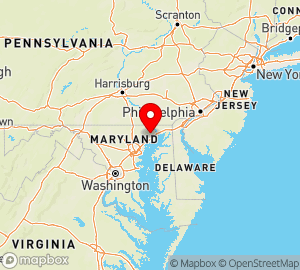Maryland
Maryland State Information

www.maryland.gov
Area (sq mi):: 12406.68 (land 9773.82; water 2632.86) Population per square mile: 573.00
Population 2005: 5,600,388 State rank: 0 Population change: 2000-20005 5.70%; 1990-2000 10.80% Population 2000: 5,296,486 (White 62.10%; Black or African American 27.90%; Hispanic or Latino 4.30%; Asian 4.00%; Other 4.10%). Foreign born: 9.80%. Median age: 36.00
Income 2000: per capita $25,614; median household $52,868; Population below poverty level: 8.50% Personal per capita income (2000-2003): $34,257-$37,446
Unemployment (2004): 4.30% Unemployment change (from 2000): 0.70% Median travel time to work: 31.20 minutes Working outside county of residence: 46.50%
List of Maryland counties:
Maryland Parks
- US National Parks
- Urban Parks
- State Parks
- Parks and Conservation-Related Organizations - US
- National Wildlife Refuges
- National Trails
- National Scenic Byways
Maryland
Seventh state; adopted the U.S. Constitution on April 28, 1788
State capital: Annapolis Nicknames: The Old Line State; Free State State motto: Fatti maschii, parole femine (Latin “Strong deeds, gentle words”) State bird: Baltimore oriole (Icterus galbula) State boat: Skipjack State cat: Calico State crustacean: Maryland blue crab (Callinectes sapidus) State dinosaur: Astrodon johnstoni State dog: Chesapeake Bay retriever State drink: Milk State fish: Rockfish (Morone saxatilis) State flower: Black-eyed Susan (Rudbeckia hirta) State folk dance: Square dance State fossil shell: Ecphora gardnerae gardnerae State gem: Patuxent river stone State horse: Thoroughbred State insect: Baltimore checkerspot butterfly (Euphydryas phaeton) State reptile: Diamondback terrapin turtle (Malaclemys terrapin) State song: “Maryland, My Maryland” State sport: Jousting State team sport: Lacrosse State summer theater: Olney Theatre (Montgomery County) State theater: Center State (Baltimore) State tree: White oak (Quercus alba)
More about state symbols at:
www.msa.md.gov/msa/mdmanual/01glance/html/symbols/00list.html
http://www.mdkidspage.org/StateSymbols.htm
SOURCES:
AmerBkDays-2000, p. 324
AnnivHol-2000, p. 70
STATE OFFICES:
State web site:
www.maryland.gov
Office of the Governor
State House
100 State Cir
Annapolis, MD 21401
410-974-3901
fax: 410-974-3275
www.gov.state.md.us
Secretary of State
16 Francis St
Jeffery Bldg 1st Fl
Annapolis, MD 21401
410-974-5521
fax: 410-974-5190
www.sos.state.md.us
State Archives
350 Rowe Blvd
Annapolis, MD 21401
410-260-6400
fax: 410-974-2525
www.mdarchives.state.md.us
Legal Holidays:
| Day after Thanksgiving | Nov 25, 2011; Nov 23, 2012; Nov 29, 2013; Nov 28, 2014; Nov 27, 2015; Nov 25, 2016; Nov 24, 2017; Nov 23, 2018; Nov 29, 2019; Nov 27, 2020; Nov 26, 2021; Nov 25, 2022; Nov 24, 2023 |
Maryland
a state on the Atlantic coast of the USA, on both shores of Chesapeake Bay. Area, 27, 400 sq km. Population, 3.9 million; urban population, 76.6 percent of the total (1970). The capital is Annapolis, and the largest city and principal port is Baltimore.
The eastern part of Maryland is a coastal lowland. The central part is occupied by the Piedmont Plateau (maximum elevation, 400 m), and the western region, by the Appalachians (maximum elevation, 1, 024 m). The climate is temperate, mild, and humid. The average January temperature is 2°-3°C, and the average July temperature, 25°-27°C. The annual precipitation is more than 1, 000 mm. There are hardwood forests on the slopes of the Appalachian Mountains.
The principal branch of the economy is industry, which employed more than 20 percent of the labor force in 1970. Maryland’s industry relies mainly on imported raw materials and is concentrated in Baltimore and its suburbs. The leading branch of industry is ferrous metallurgy. The Bethlehem Steel Corporation’s plant in Sparrows Point (near Baltimore) is one of the largest steel plants in the USA. Other important industries are machine building (shipbuilding), radio electronics, aircraft and missiles, chemicals, oil refining, food processing (primarily canning of vegetables and fish), and the garment industry, as well as the manufacture of large metal structural components. As of 1972, the capacity of Maryland’s electric power plants was 6.1 gigawatts.
Animal husbandry accounts for more than two-thirds of the value of commercial agricultural production. In 1971 there were 430, 000 head of cattle, including 170, 000 dairy cows, and 220, 000 pigs. Poultry farming is also well developed. Truck farming is important on the coastal lowland, primarily on the Delmarva Peninsula. Tobacco is grown in Maryland. Off the coastal areas fish, shrimp, and oysters are caught.
V. M. GOKHMAN